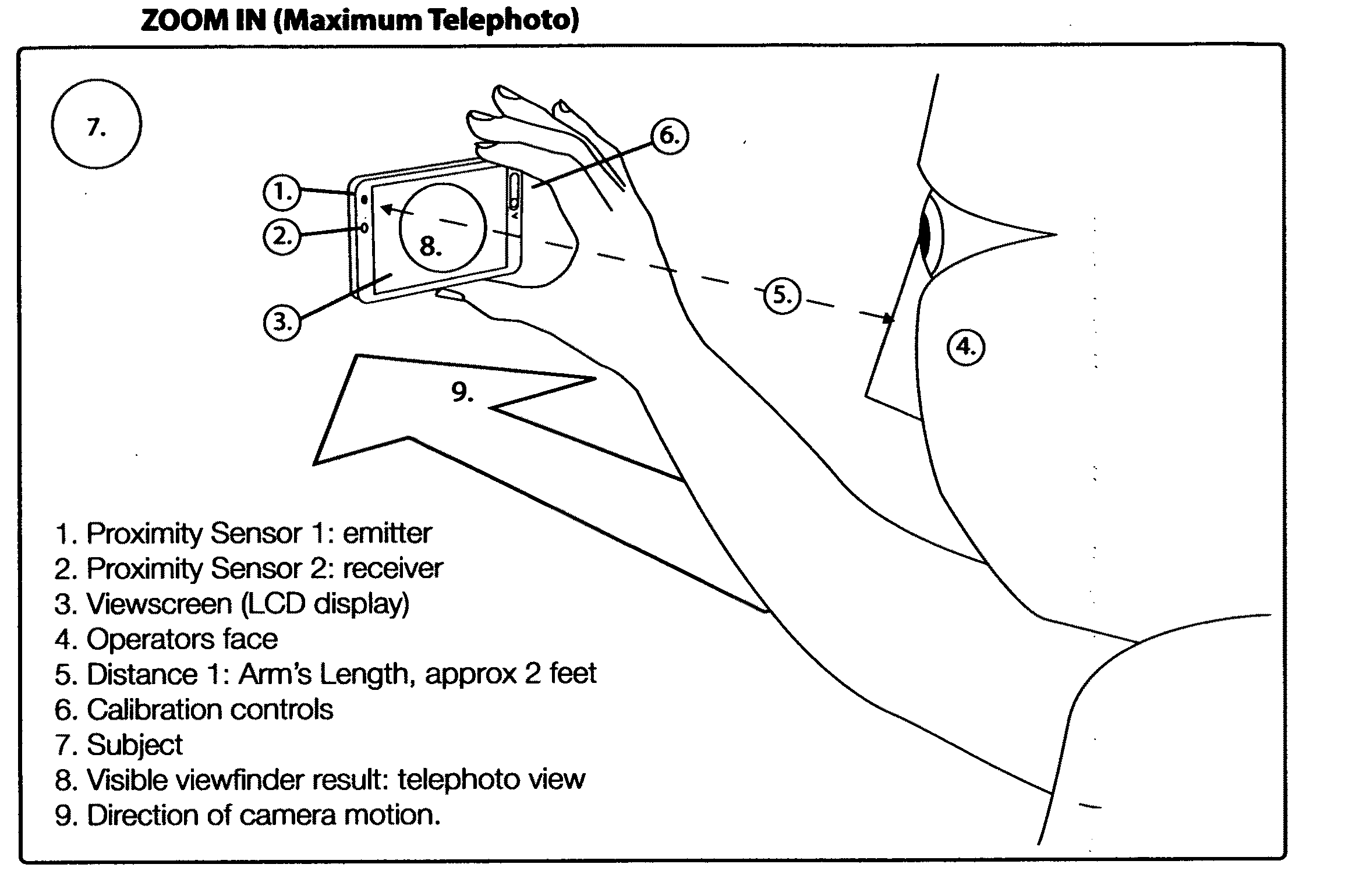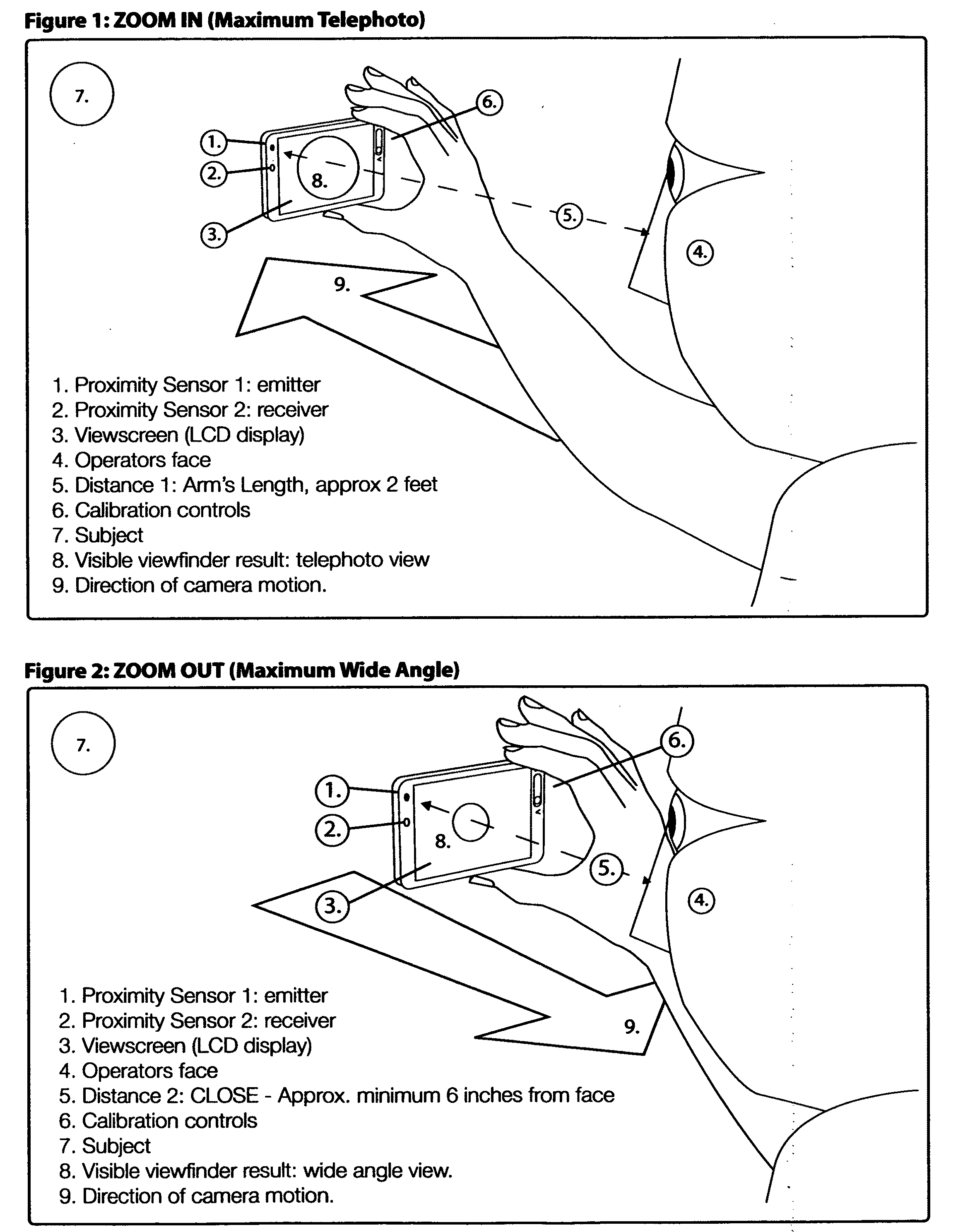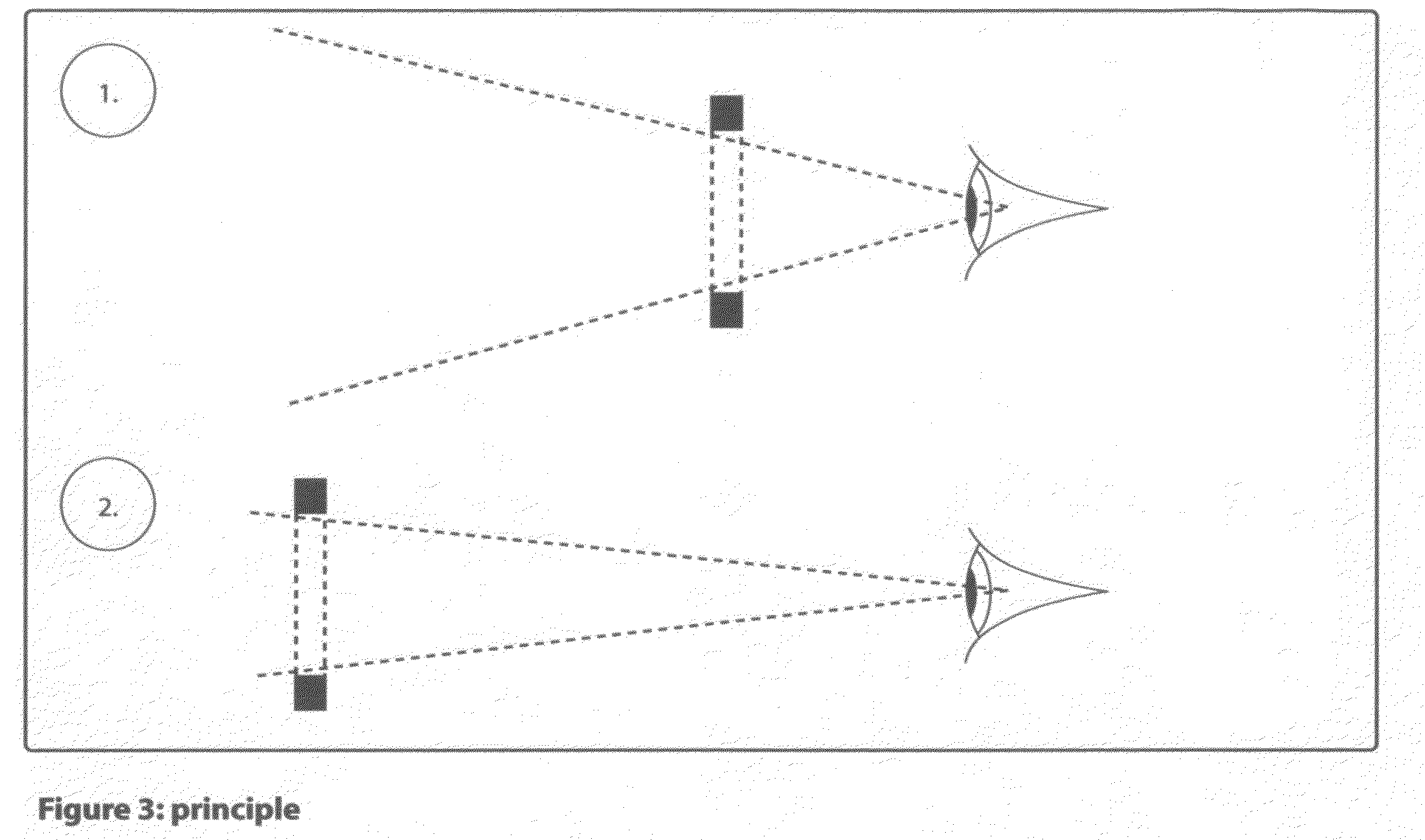Self-zooming camera
a self-zooming and camera technology, applied in the field of self-zooming cameras, can solve the problems of no simple button-free or hand-free method to effectively operate the zoom lens
- Summary
- Abstract
- Description
- Claims
- Application Information
AI Technical Summary
Benefits of technology
Problems solved by technology
Method used
Image
Examples
Embodiment Construction
[0018]The System.
[0019]The Self-Zooming Camera utilizes proximity detectors and / or motion detectors in the camera or recording device to detect the position of the camera / recording device relative to the operator's eye or face—the further away from the operator's face; the more the camera lens is zoomed in (narrowing angle of view); the closer the camera is to the operator's face, the wider the angle of view from the lens. This approach to control is based upon the concept of approximating what the human eye sees when looking through a frame or viewfinder.
[0020]The camera or mobile device require the use of Infrared proximity detection (diffuse reflective sensing) to send light from camera to operator's face, and measure time on return to camera. It may also be possible using more accurate ultrasonic sensors, but the short range and limited application mean that the simplest measurement sensors should suffice. The maximum / minimum operating distance for the camera is a ‘comfortable’ ...
PUM
 Login to View More
Login to View More Abstract
Description
Claims
Application Information
 Login to View More
Login to View More - R&D
- Intellectual Property
- Life Sciences
- Materials
- Tech Scout
- Unparalleled Data Quality
- Higher Quality Content
- 60% Fewer Hallucinations
Browse by: Latest US Patents, China's latest patents, Technical Efficacy Thesaurus, Application Domain, Technology Topic, Popular Technical Reports.
© 2025 PatSnap. All rights reserved.Legal|Privacy policy|Modern Slavery Act Transparency Statement|Sitemap|About US| Contact US: help@patsnap.com



